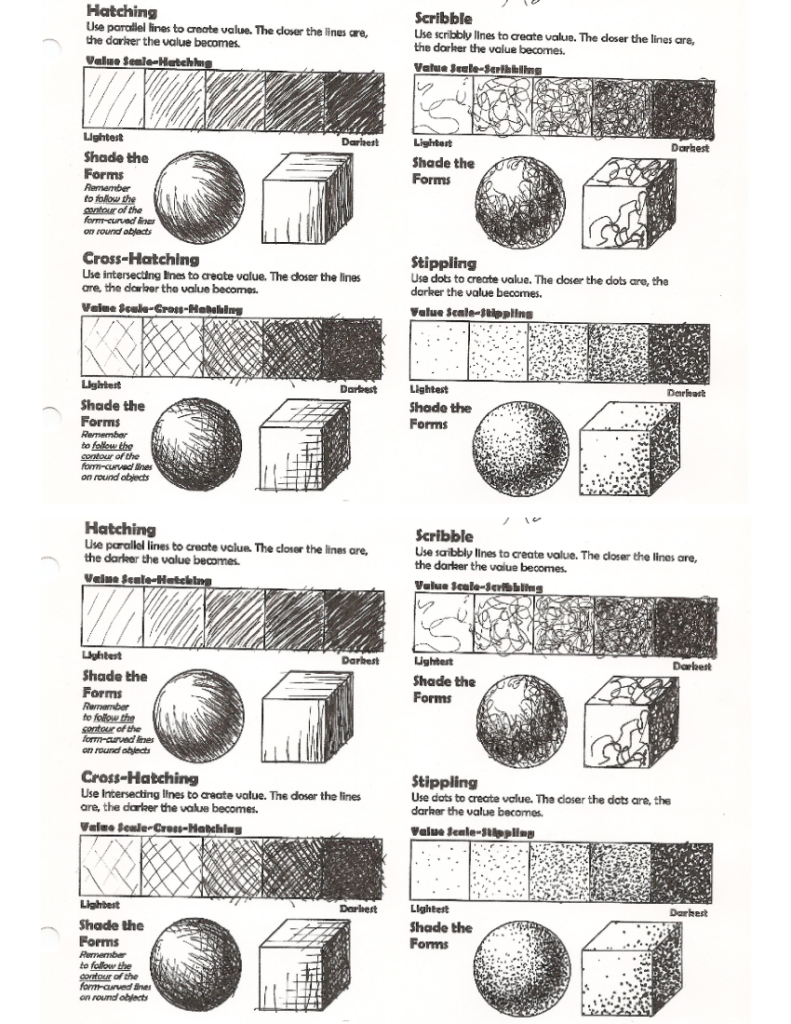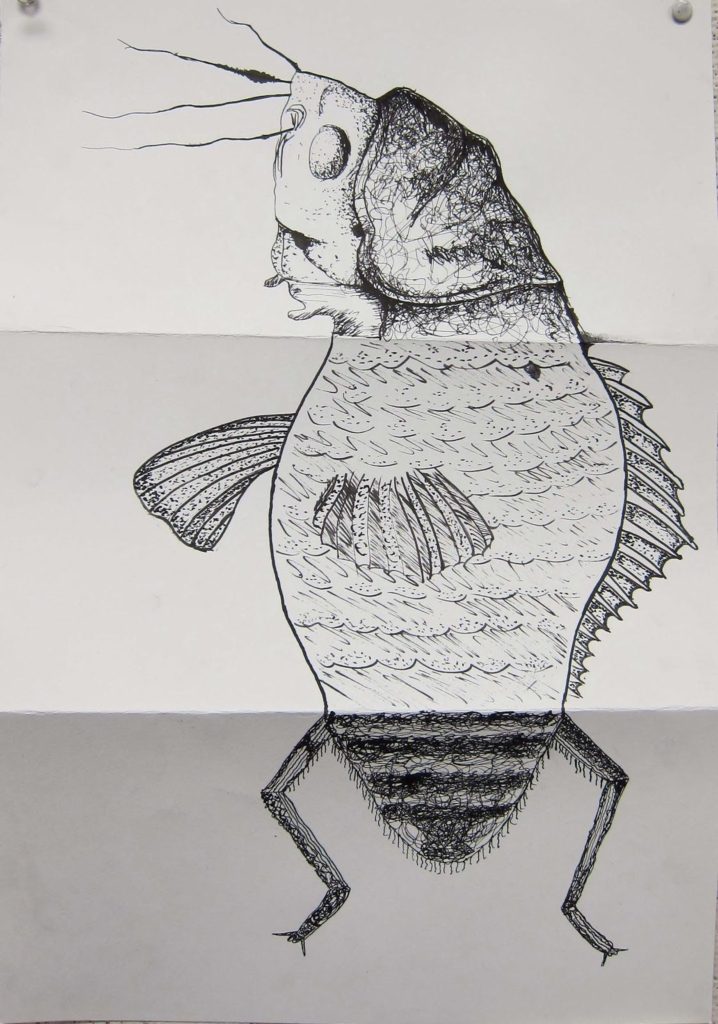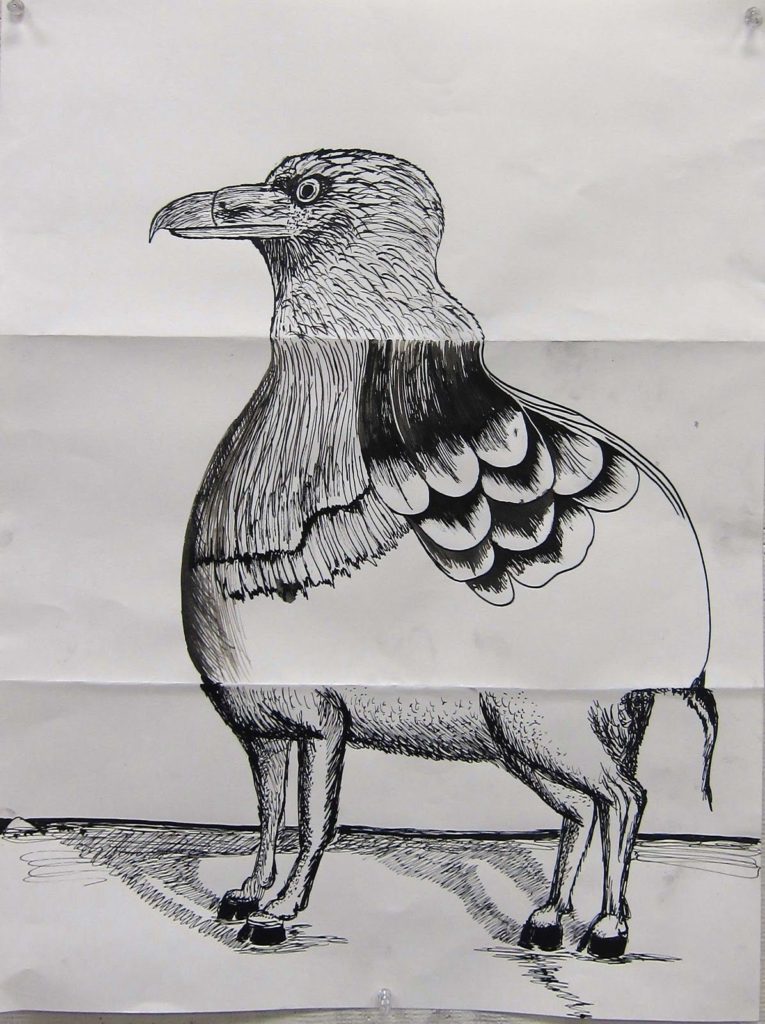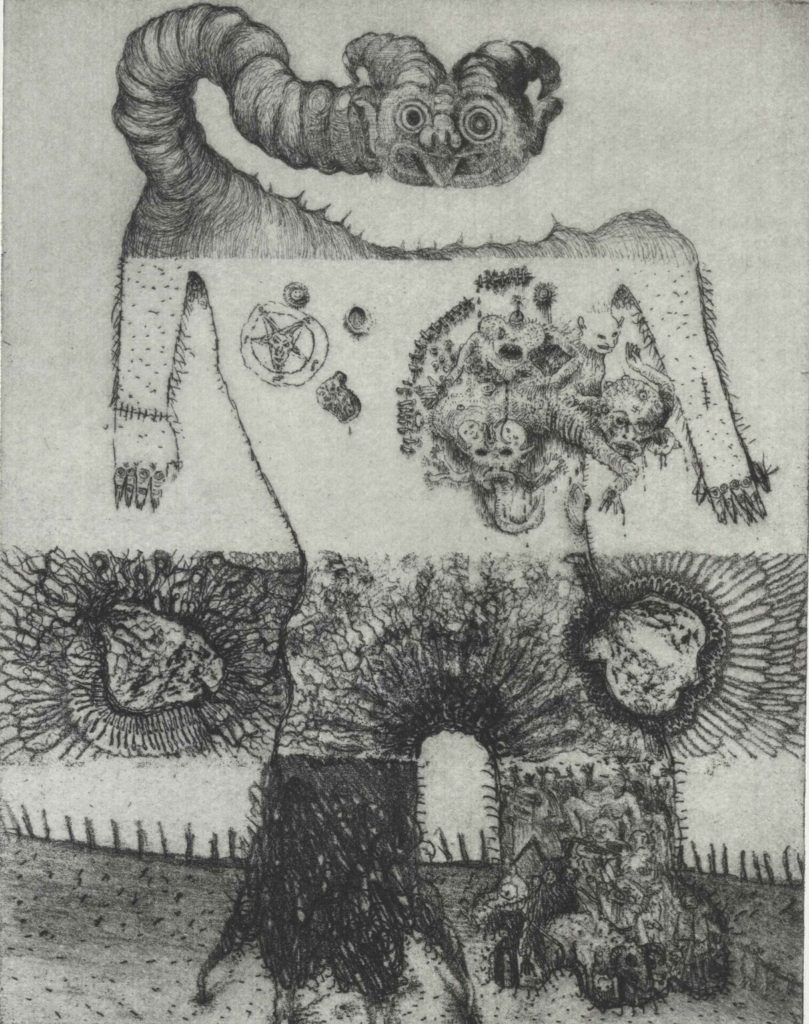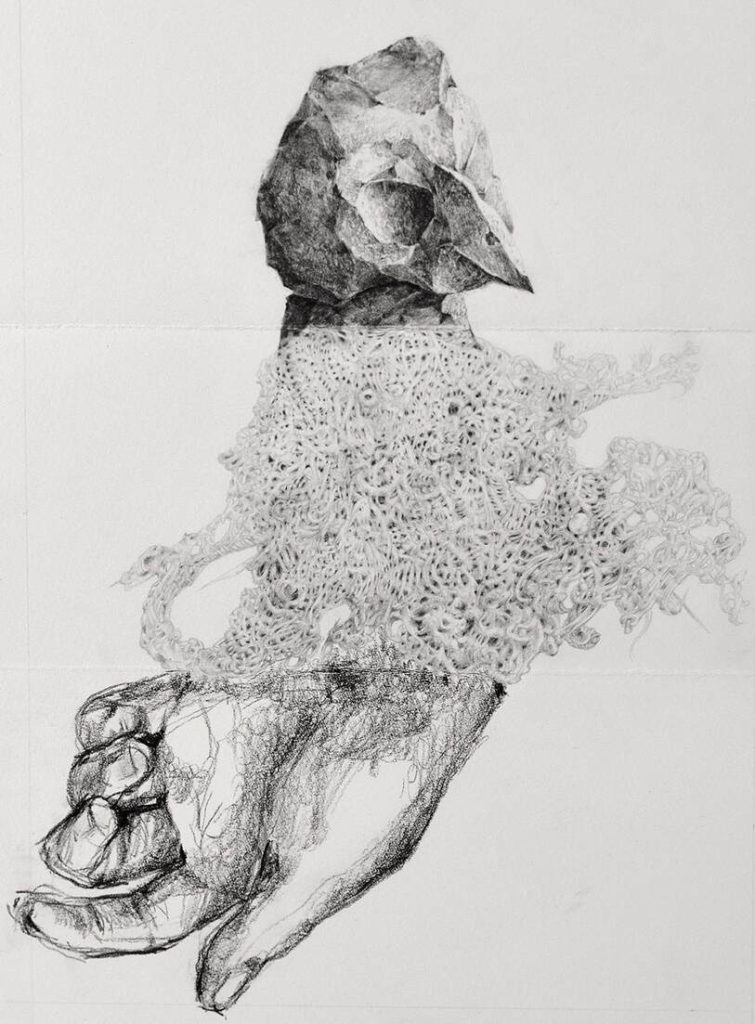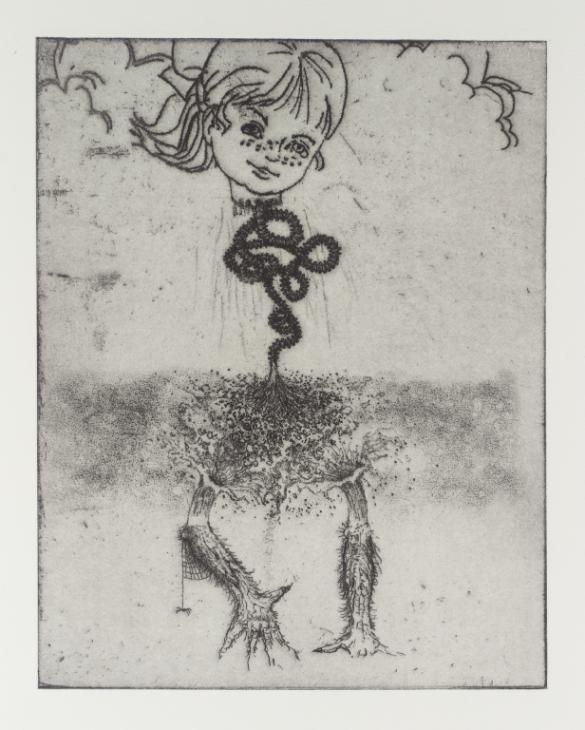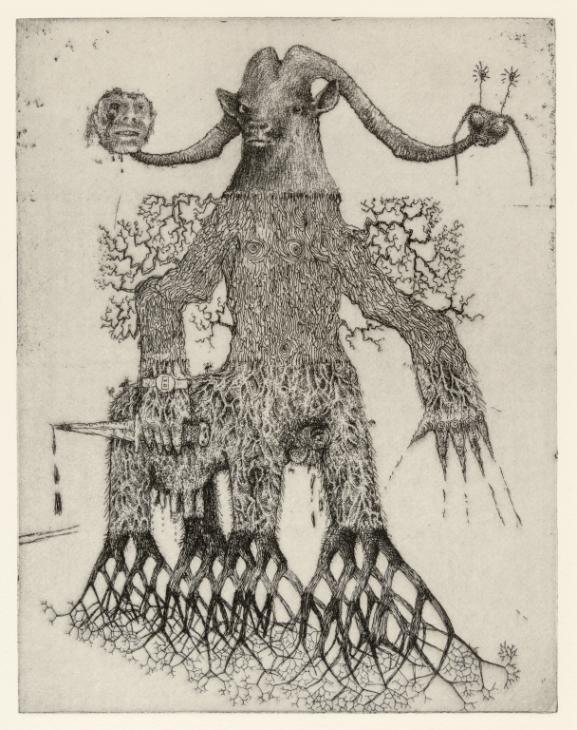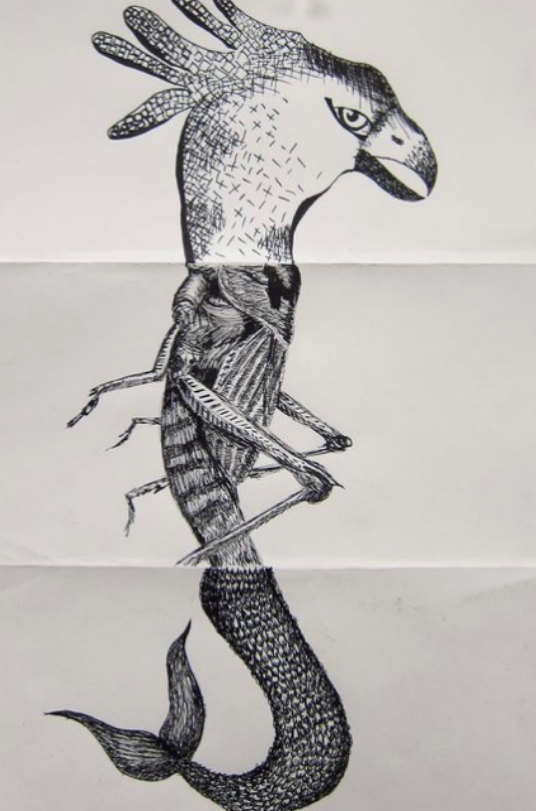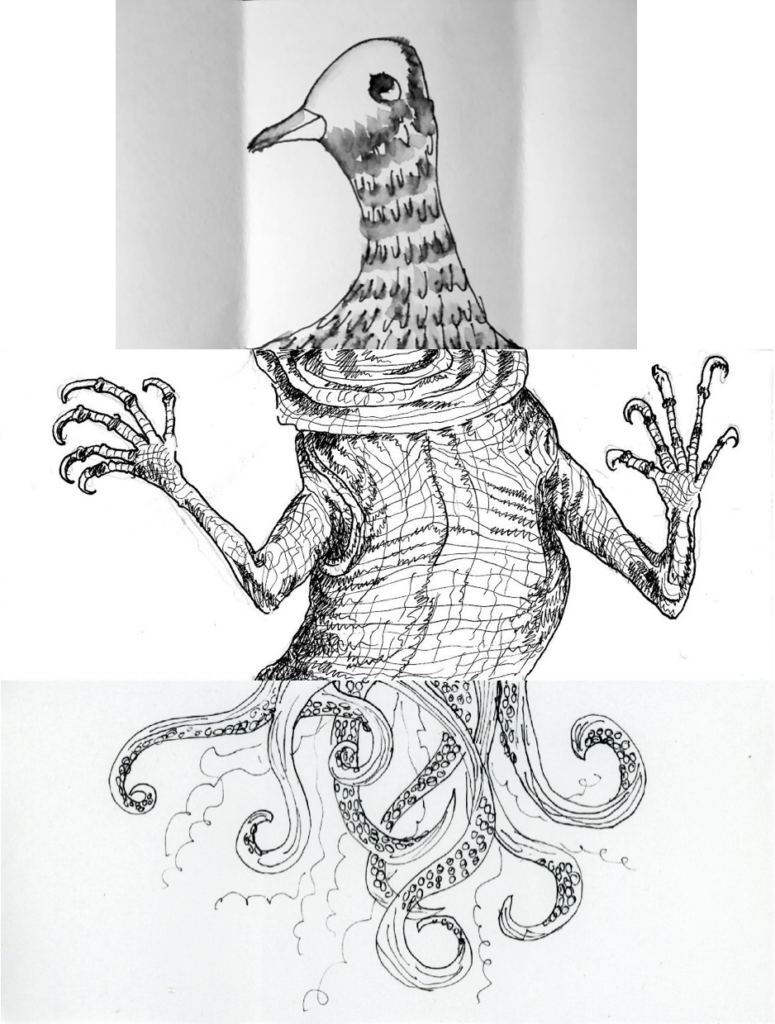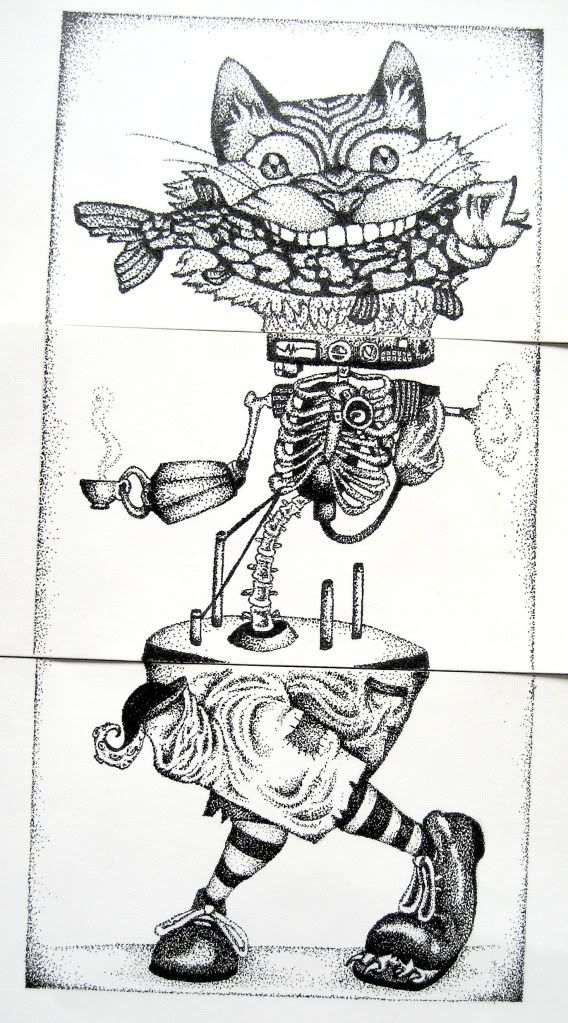Participants play by taking turns drawing sections of a character on a sheet of paper, folded to hide each individual contribution. The first player adds a head—then, without knowing what that head looks like, the next artist adds a torso, and so on. draw the neck and the legs slightly over the fold so the next person knows where to begin. In this way, a strange, comical, often grotesque creature is born. Take your time and add detail and shading to your sections using the shading guide examples using the whole 5 minutes allowed.
Exquisite corpse (from the original French term cadavre exquis, literally exquisite cadaver), is a method by which a collection of images is collectively assembled. Each collaborator adds to a composition in sequence, by being allowed to see only the end of what the previous person contributed.
This technique was invented by surrealists and is similar to an old parlour game called Consequences in which players write in turn on a sheet of paper, fold it to conceal part of the writing, and then pass it to the next player for a further contribution. Surrealism principal founder André Breton reported that it started in fun, but became playful and eventually enriching. Breton said the diversion started about 1925, but Pierre Reverdy wrote that it started much earlier, at least as early as 1918.[1]
The name is derived from a phrase that resulted when Surrealists first played the game, “Le cadavre exquis boira le vin nouveau.” (“The exquisite corpse shall drink the new wine.”)[1][2] André Breton writes that the game developed at the residence of friends at an old house in Montparnasse, 54 rue du Château (no longer existing). Besides himself he mentions Marcel Duhamel, Jacques Prévert, Yves Tanguy and Benjamin Péret as original participants.[1][3]
Example Drawings


